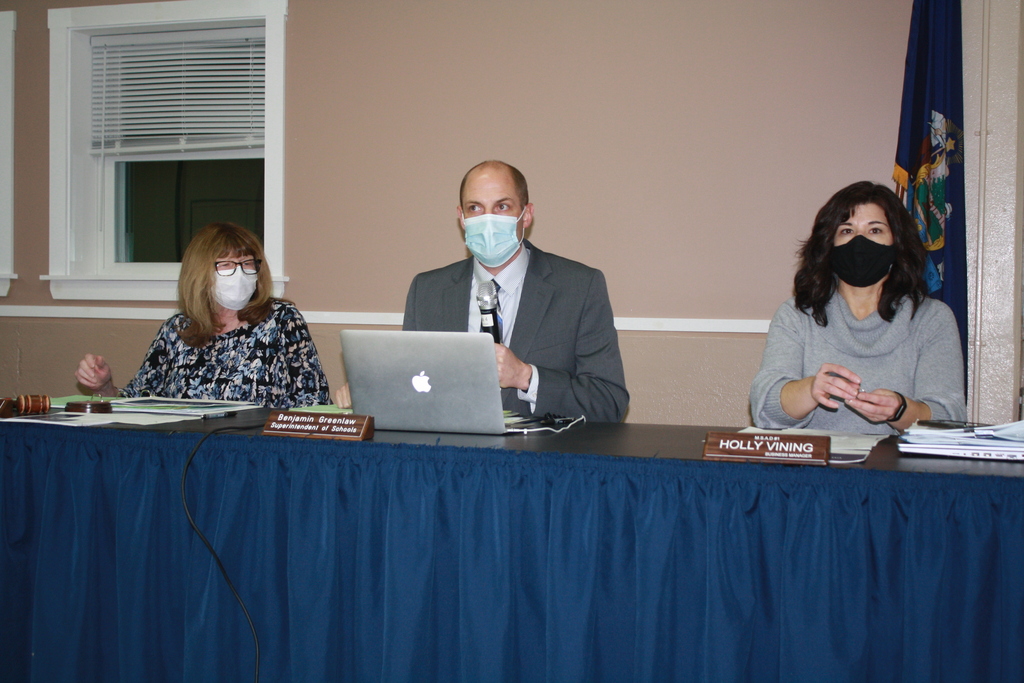
PRESQUE ISLE, Maine — Students and staff in SAD 1 schools might not be required to wear masks starting in early March, if the school board chooses to opt out of the current universal masking policy.
During the board’s Wednesday meeting, chair Lucy Richards announced that a special meeting to reconsider the district’s masking policy will be held Monday, Feb. 28. The meeting will begin at 5:30 p.m. in the Presque Isle High School cafeteria.
If SAD 1 drops universal masking, they will join two other districts in Aroostook — SAD 70 in Hodgdon and RSU 89 in Stacyville (Katahdin) — that currently make masks optional. Schools across Maine have begun revisiting their mask mandates after neighboring New England states began to drop their own masking requirements.
Maine CDC Director Nirav Shah unveiled revisions Wednesday to the standard operating procedures that have guided schools’ COVID-19 decisions throughout the pandemic. Shah indicated that the omicron “bullet train” shows signs of slowing and the state will revisit mask mandates after next week’s school vacation.
Although SAD 1 Superintendent Ben Greenlaw said he will examine the operating procedures more fully in the coming week, he shared the most crucial changes with the board and other staff members.
Starting March 7, Greenlaw said, the CDC will not require schools to quarantine close contacts regardless of whether they have a universal masking policy. Currently, only schools with universal masking, which includes the SAD 1 district, are exempt from quarantining close contacts.
As of March 7, students and staff who test positive for COVID-19 still must stay home until they are asymptomatic and must wear masks for five to 10 days after returning to school, Greenlaw noted.
In addition, the federal CDC is expected to lift its mask requirement for public transportation, including school buses, on March 18.
Greenlaw said holding the special board meeting after February break will give board members more time to review the operating procedures and more time for parents to enroll their children in pooled testing, which the Maine CDC continues to recommend.
“We still have to wrap our heads around the SOP so we can make an informed decision on what the impact would be [if universal masking was gone],” Greenlaw said. “If we make masks optional, that will likely take effect March 7 so we can align with the CDC.”
Greenlaw shared data with the board showing that in February case counts in the district have begun moving in more positive directions.
Though the district saw its biggest increase of cases from Dec. 2021 (82 cases) to Jan. 2022 (206 cases), they are already seeing cases drop significantly. In February, the district has recorded a total of only 71 cases thus far.
Since the Maine CDC removed the close contact quarantine requirement for schools with universal masking in early January, SAD 1 has only sent home individuals who test positive and develop symptoms for COVID-19.
Seventy percent of the district’s students and staff are either fully vaccinated or enrolled in pooled testing. Those factors have also helped SAD 1 schools remain open for in-person instruction, Greenlaw said.
“Overall, we’re seeing a decrease in cases and that’s another step towards normalcy for our students and staff,” Greenlaw said.
Like most districts in Aroostook, SAD 1 began the school year with optional masking but quickly switched to universal after surges in the delta variant. Despite frequent pushback from parents, the board has kept universal masking in place to curb the spread of COVID and reduce the number of students and staff required to quarantine.
In other business, the board received preliminary state education funding numbers from Holly Vining, SAD 1’s business manager.
Despite a decline of 34 students during the 2021-22 school year, the district will still receive at least $723,000 more from the state in the next fiscal year to “one-year revisions” to their Essential Programs and Services funding formula.
To give more funding to schools dealing with declining enrollment during the pandemic, the state has lowered the formula’s student-to-teacher ratios from 17:1 to 16:1. They also increased the per-pupil rate for “economically disadvantaged students,” those who qualify for free or reduced lunch, from 15 percent to 20 percent.
Other positive trends involve the state’s education mill rate, which will drop from 7.9 in fiscal year 2022 to 7.1 in 2023. After the legislature enacted the state’s promised 55 percent contribution to schools this past summer, SAD 1 saw an additional $499,000 added to their budget.
“That money has been coming to us through monthly subsidies and we will use it to offset [the district’s portion of local taxes],” Vining said.
The board’s next regular meeting will be at 5:30 p.m. on Wednesday, March 16, in the Presque Isle High School cafeteria.







